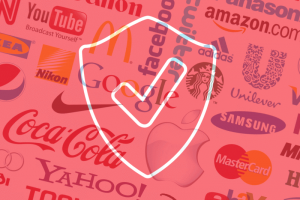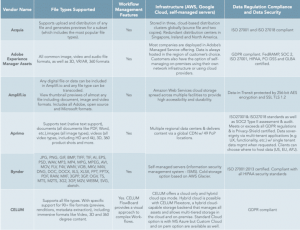First impressions last.
This is entirely true especially when you talk about a user’s first experience with a digitally-inclined startup products. It’s make or break right at the start, and the start falls under the realm of UX design, where relevant web developer skills matter a lot.
UX is crucial to every startup: it makes complex processes simple and relevant features noticeable. UX is a startup’s way of putting themselves in the users’ shoes to provide relevant content, reduce usage friction, and eliminate navigation confusion.
UX actually drives a startup’s growth.
To keep you from doing or repeating significant UX design failures, we’ve compiled 12 staggering reasons why startups fail their user experience. Read on to acquaint yourself with these user experience mistakes.
1. Wrong UX audience

- Photo via Pexels
Never forget to put your target audience’s technological capacity in consideration. When deciding on UX complexity and design, do it under the guidance of your market demographics. Many Baby Boomers will appreciate digital products that are extremely easy to use and intuitive to navigate. When it comes to millennials, you can rev up the feature complexity without losing their attention and your digital product’s overall UX design.
2. Complex Account Creation

- Photo via Flickr
In light of recent security breaches, it’s understandable that many startups try to jam in as much security measures as possible. Unfortunately, high-level security doesn’t equate to great UX design, especially if the security measure heavily relies on the user’s initiative.
Take startups that require overly-complicated password strength for example, coming up with a password at the correct length with a combination of uppercase letters, lowercase letters, numbers, and other characters is a sure way to forget their password. Not only that, users might find the process tiring and eventually opt out from creating their account for your startup.
3. Text-Intensive Design
Considering how every digital product nowadays heavily uses visuals in their favor, putting up a text-intensive product design is a huge UX blunder. It will tire out the user’s eyes, content won’t be appreciated, and it will lead to higher bounce rate, the percentage measurement of visitors who quickly left your site after viewing only a single page.
Injecting visually-compelling elements will help a lot in keeping your bounce rate down.
4. Multilayered Sign-in

- Photo via Flickr
Nobody likes to go through a lot of hoops just to view your content. Requiring users to create an account, entering an email address, and signing up with their social media accounts to get a glimpse of your content is a surefire UX tactic that will keep users away.
5. No Auto-Complete
Google’s convenient features made most Internet users heavily reliant on things like an auto-complete. For that matter, it’s a great idea for startups to benchmark some of Google’s UX designs as well.
Incorporating the auto-complete feature into your site’s UX will help a lot in allowing users to navigate through pages. Not only that, the resulting suggestions might pique their interest on other products, which can complement with the product they were initially searching for or even serve as a better alternative. This will boost customer satisfaction and increase the chance of converting them into repeat customers.
6. Annoying Forms
Forms are long, boring, tiring, and intrusive. Form is that one necessary step away from connecting the user to your product, so try to make it as short and as interesting as possible to make that jump from visitor to customer easy as well. Gamifying forms is a great UX design idea to engage users without noticing that they’re actually accomplishing the form.
7. Unreadable Text and Links
Small font, bad font. The combination of these two UX design horrors may be enough to jeopardize a startup’s long-term success. Unreadable text and links will keep users from appreciating your content, knowing where to proceed, and clicking relevant product links.
8. Call To Action is Nowhere to be Found
Forgetting to include call to action buttons, links, or directions to your UX design is like leading users to a maze without an exit. You have already piqued the user’s interest and maintained the required attention to lead them to your product landing page, it’s time to move in for the lead.
Keep your call to action elements in sight; and make sure that they’re not intrusive.
9. Painfully Inconsistent Navigation
If your users feel that they’re playing a complex game that changes level and monsters at certain points every time they visit your site, that means you’re doing it wrong. Inconsistent UX designs will hurt your chances at lead conversion. There’s a reason why uniformity is a design element, it keeps the site flow reliably consistent for users to navigate on.
10. Unresponsive Design

- Photo via Pixabay
Unresponsive design is bad UX design. Failing to account for different viewing platforms, Internet browsers, and required plug in technologies are one of the fastest ways a startup can do to fail user experience.
A site designed for Google Chrome on PC running on a Flash plugin extension will lead to a broken design and faulty UX the moment users decided to view the site on mobile using Safari without any Flash plugin installed.
11. Forgetting to Test for Improvement
Failure to test your site for UX design improvement will keep your lead conversion rates stagnant at best. User experience testing is important for startups to figure out where they’re doing great and where they’re performing poorly so they can avoid ruining site features that truly work and fixing the underperforming pages.
A/B testing is currently the most preferred optimization testing method as it allows startups to experiment and break things quickly until they discover which feature combinations make users respond best.
12. UX is an Afterthought

- Photo via Pexels
One of the worst mistakes a startup can make is half-heartedly incorporating UX design late into the process when it should be the center of the development process right off the bat. UX should be treated as the heart of a startup. Without it, even products with world-class design and features won’t be able to deliver the results you hoped for your startup.
User experience is important. Startups rely on user purchases to keep income flowing until they’re stable enough. Failure to put user’s experience in consideration will hurt your startup’s revenues since users will pay for products that they find easy to use and understand. Keeping them in the dark will only drive them away.
Incorporating great UX designs right from the start is the only sustainable solution to ensure more users are going to appreciate and buy your product and the only way to keep your startup afloat. Now go get your UX design lessons, know which web developer skills your startup needs.
Keep your startup from repeating these costly user experience mistakes.
Digital & Social Articles on Business 2 Community(57)





